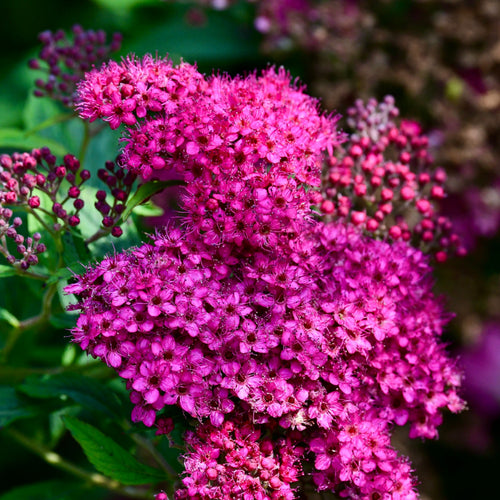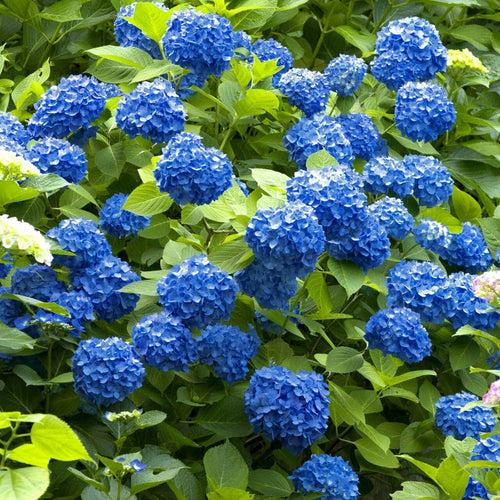Pink Spirea Shrub
The pink spirea is a favorite for home gardeners and landscapers alike, admired for its vibrant blossoms and three-season color. A hardy, deciduous shrub and member of the Rosaceae family, it does well in hardy zones 4 to 9. This plant gets its name from the Greek word, spirea which means spiral, and refers to the coiled or wreath-like clusters of its small, showy flowers in bursts of mauve, pink, rose, and red.
Three-Season Color
Spirea bushes belong to a genus of more than 80 woody shrubs and typically fall into spring or summer classifications. April to May spring bloomers include the well-known bridal wreath species, which produces large panicles of soft white flowers along gently bowing branches. A summer bloomer, pink spirea blossoms from June to August, its clusters of pink, red and white flowers appearing on more upright stems. There are many cultivars of spirea which also produce an abundance of color.
While the flowers themselves are beautiful, the fine-textured, lanceolate leaves of pink Spirea are equally lovely. During the spring and summer months, spirea displays foliage varying in color from chartreuse to deep green. In autumn, however, spire foliage turns gorgeous shades of yellow, orange-red, and sometimes purple, creating added interest to gardens and landscapes.
Planting and Care
Pink Spirea bushes are a fast-growing, excellent ornamental choice for perennial gardens and borders. They pair well with hydrangeas, Hostas, and spikes of salvia. Because species of Spirea grow to varying heights, some are good choices for foundation plants, while others may be better in a mid-border planting. A bridal wreath, which can grow from four to eight feet in height with a six to eight-foot spread, is often utilized as an eye-catching privacy hedge.
Spirea takes well to pruning, and doing so promotes healthy growth. Spring flowering species should be pruned immediately after flowering. On the other hand, summer-flowering species should be pruned in winter after the leaves have fallen. Easy to grow and care for, pink spirea attracts bees and butterflies, and various other pollinators.
While pink spirea can handle moderate shade, for the most vibrant blossoms and fall foliage color, plant these shrubs in full sun and neutral or slightly acidic, well-drained soil. Deadhead flowers immediately after they bloom to encourage new growth.
Propagation
Planting a Spirea bush is simply a matter of digging a hole twice as wide and as deep as the existing root ball and sprinkling the hole with bone meal. After the bush is planted, backfill and cover with a few inches of compost.
Spirea plants can also be propagated from softwood and hardwood cuttings and by ground layering. The latter bypasses cutting by bending soft stems still attached to the mother plant and laying them across the ground in a 1-inch deep, 3-inch long trench. Successful propagation can be had by removing the leaves from these stems, scouring the outer bark in spots, pinning them to the ground, and covering the trench with soil. Keep the soil moist, and new roots should form in six to eight weeks, after which you can sever the stems from the mother plant and transplant them.




















































